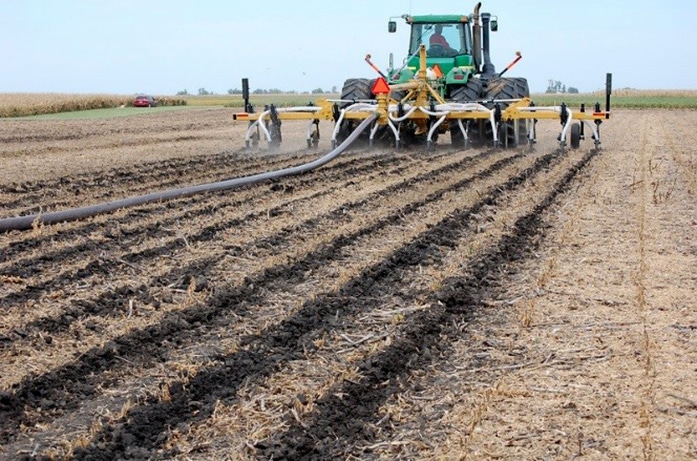Weigh the benefits and needs of your operation when debating between fall or spring manure application.
November 22, 2017

By Daniel Andersen, Iowa State University assistant professor in the College of Engineering and College of Agriculture and Life Sciences
Another fall is drawing to a close and with it a fall application season, and with your storage emptied or at least soon to be emptied, it might seem early to start thinking about spring manure application. However, it’s also the perfect time to start planning for spring. As the Midwest is dominated by two application seasons, spring and fall, one of the most common questions is how does spring manure compare to fall manure in terms of both crop performance and impact on soil and water quality.
Applying in the spring leaves less time for decomposition of organic material in the manure and conversion of manure nitrogen into nitrate before the crop is up and actively growing. This can be a good thing as it can reduce the loss of nitrate, but often times spring is a busy time with planting and other fieldwork and any delay caused by waiting for manure application might reduce our yield potential. Additionally, in the spring we are often dealing with wet soils that may make soil compaction a concern.
If we apply in the fall, it gives microbes in the soil time to decompose the manure, which can make the manure nutrients available to the crops as soon as they are planted. On the other hand, it gives us more time for nitrogen loss before the crop is up and growing.
A recent summary of nitrogen application timing was performed as part of the Iowa Nutrient Reduction Strategy. The summary was not specific for manure, but was geared at how timing of nitrogen application influenced losses through leaching and crop production. They estimated that switching from fall fertilizer application to a pre-plant nitrogen application in the spring would reduce nitrogen losses by 6% on average. These studies also indicate that switching from fall application to spring application would increase corn yield by 4% on average. For completeness, they found that switching from spring nitrogen application to side-dress application or a split pre-plant/side-dress application would reduce nitrate leaching by 4-7 %.
Although much of this work was with fertilizers other than manure, the science still applies. Incubation studies comparing nitrogen mineralization rates of swine manure and urea fertilizer show very similar mineralization patterns, indicating similar nitrogen application timing recommendations are appropriate.
This isn’t to say that’s the final answer. The studies summarized in the study are based on ideal fall manure application timing; that is waiting until the soil is 50 degrees and cooling before applying. Applying earlier than this can cause greater losses of nitrogen. Similarly, the answer isn’t the same all over. If we take and try to apply the same science in the eastern Corn Belt of Indiana and Ohio we typically would underestimate the impact of timing. That is because these states have warmer winters than those typical of Iowa.
So what this means to us if we are using manure as a fertilizer source is if we have ammonium-rich manures we want to wait until our soils are cooling before we apply it. Otherwise, it will be converted to nitrate yet this fall and be susceptible to losses all winter and spring before our crops have the opportunity to use it. This desire to delay manure application until the soil is cooler needs to be balanced against the availability of equipment and the risk of a quick change in weather conditions (frozen soils) preventing manure application.
Like most choices in life, there isn’t one easy answer that will work for everyone. It’s all about balancing your risk of not completing your manure application with your desire to maximize its fertilizer value.
You May Also Like



